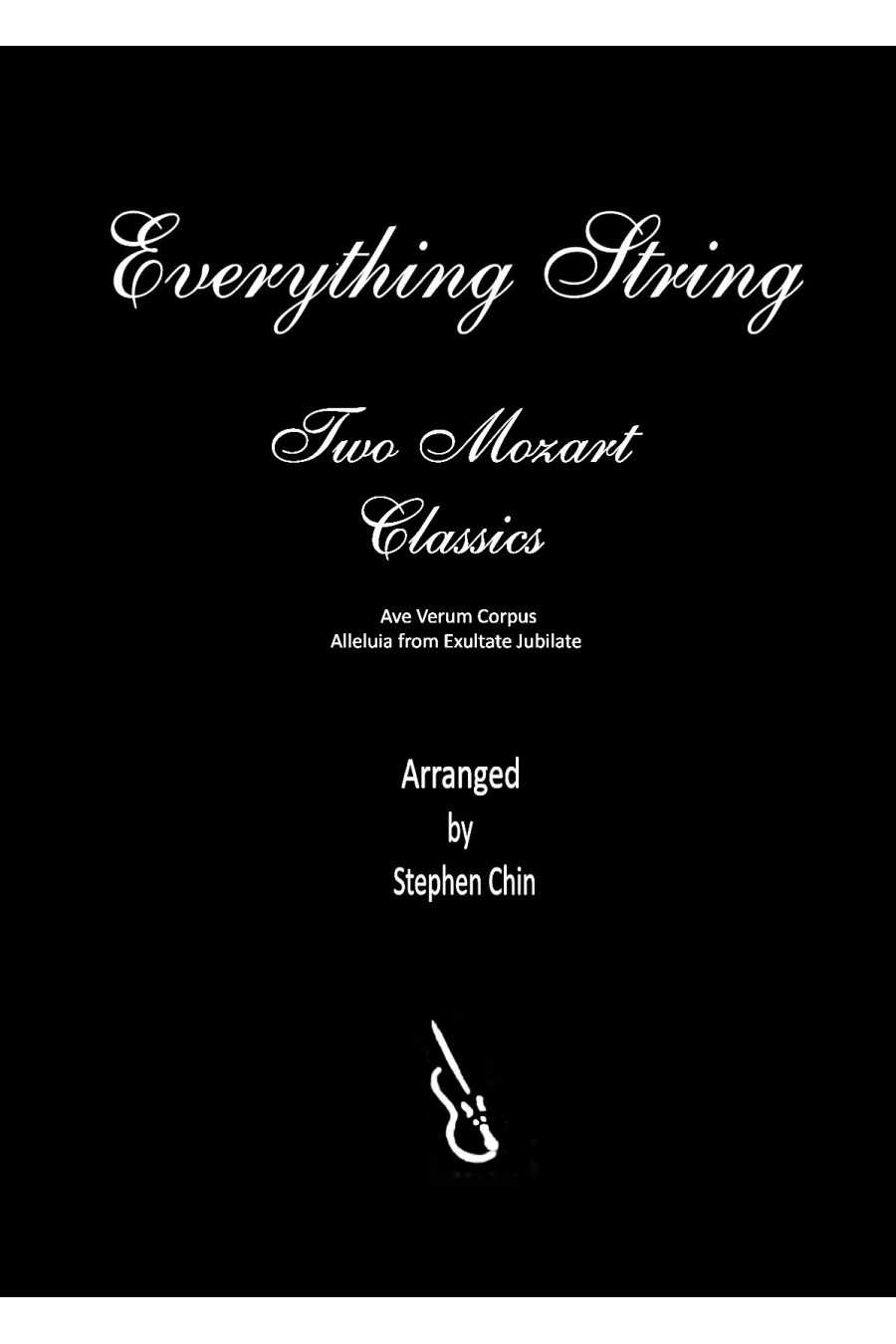

Mozart's Ave Verum Corpus and Alleluia from "Exultate Jubilate" are two of his most cherished liturgical compositions. All the difficult melismas have been adapted without losing the original excitement.
1. Ave Verum Corpus
2. Alleluia from Exultate Jubilate
For String Orchestra Grade 3
Mozart's Ave Verum Corpus and the Alleluia from "Exultate Jubilate" are two exceptional liturgical compositions that were originally written for choir or solo voice and orchestra. These pieces are a testament to Mozart's musical genius and continue to captivate audiences with their intricate melodies and harmonies. Despite the challenging melismas, the adaptations made to the pieces ensure that none of the original excitement is lost. It's no wonder that these two works are among Mozart's most cherished compositions.
1. Ave Verum Corpus
2. Alleluia from Exultate Jubilate
For String Orchestra Grade 3
The Gloria from the Latin Mass is a joyful and energetic piece for orchestra and two-part choir, inspired by the homage to God. It is easy to play, with alternative instruments covering several parts. Male voices can sing the two vocal parts an octave lower. Each orchestra section is featured in the interludes, and the piece concludes with a lively flourish.
For full orchestra and 2-part choir - Grade 3
This music piece tells the legend of how the Kookaburra got its laugh. It was created for the Cooloola Shire Symphony Orchestra in Queensland, Australia, in collaboration with elders from the Nations in the area. The composition features a full orchestra, narrator, and didgeridoo. It's an engaging introduction to the orchestra for young listeners, with the didgeridoo blending well with the orchestra.
For Full Orchestra, Narrator and Didgeridoo Grade 4
This music piece is based on an old English hymn that depicts a journey to hope, titled To the Palace of Light. It has a solemn beginning, turbulent middle, and faster, jig-like ending. Elements of the hymn can be heard throughout, making it a great choice to end a concert or festival.
For double string orchestra, grades 2 & 4
Port Fairy and the Twelve Apostles are two of Australia's most scenic places. The Gentle Boats at Port Fairy plays Irish music, while Storm over the Twelve Apostles depicts the fury of Mother Nature on the stone formations by the southern coast.
These quirky pieces are trinkets that can spark young musicians' imaginations. They cover many techniques, such as pizzicato, staccato, harmonics, and rapid eighth notes, which can help beginning orchestras build their skills in a fun way. The memorable tunes often shared around the orchestra will indeed have your students begging for more!
1. Busy Bikes
2. Sanpan in the Clouds
3. Elephants and Fleas
4. It's Raining Diamonds
5. Very Dark Elves
6. Tibetan Trinkets
7. King Bruce's Spider
8. Nullarbor
9. Dragon Crusher
10. Magical Mandolines
11. Fuji
12. Ice Train
For String Orchestra Grade 1
Chin, Haydn Symphony No.60 1st Movement
This arrangement for strings is faithful to the original work with the added features of sharing the melodic lines, a slight editing of a few bars of the bass part, a violin 3 part and a keyboard realization. It is also an excellent way to develop Classical style spiccato in more advanced players.